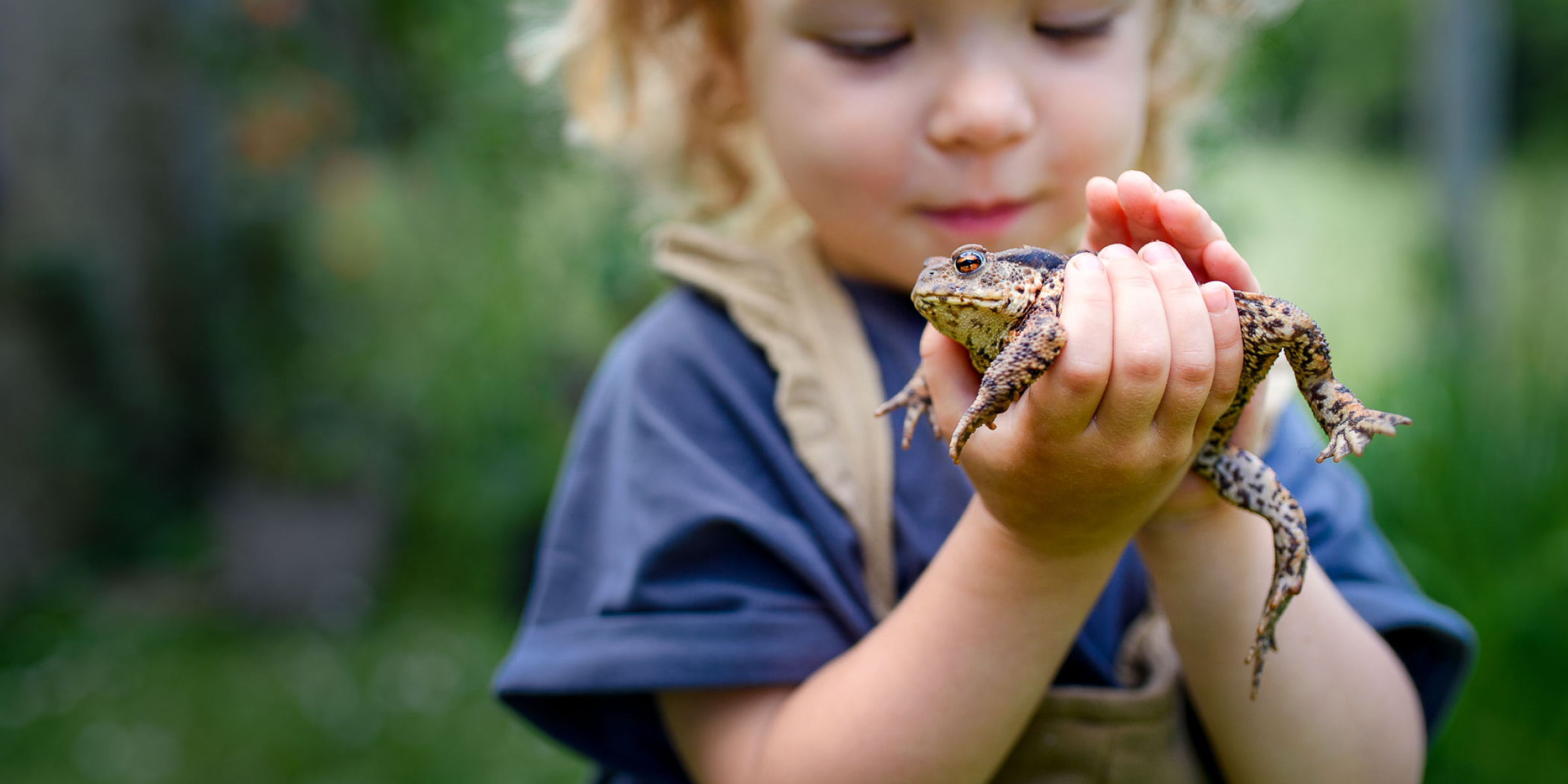
Little girl holding a frog in both her hands.
Letter From The CEO
From Childhood Memories to Critical Conservation
Our CEO reflects on a personal experience with frogs, their cultural significance, and how the conservation work at the Aquarium can help amphibians in the wild.
My first memory of being alive is sitting in one of those little wading pools at age three as a frog jumped in to join me, and me being delighted as my dad chuckled. Frogs are my origin story.
It is only fitting that this spring edition of Pacific Currents features frogs and other amphibians. Just as spring is a time of renewal and rebirth, frogs have been viewed by many cultures as symbols of transformation, rebirth, and fertility. Ancient Egyptians revered Heget as the goddess of fertility. She was often depicted with a frog head, and frog amulets were worn by Egyptian women to invoke Heget’s protection during childbirth.
The Aquarium’s engagement with frogs is based on our commitment to their conservation and their remarkable diversity of adaptations to living in some of the world’s most severe conditions. There is an Alaskan wood frog that can survive Arctic winters by having over half of its fluids freeze—sort of a frog popsicle. Most of us have heard of poison dart frogs—those brightly colored tropical frogs that are so lethal, that the toxin from one frog could kill ten humans.
Frogs worldwide are in peril because of the usual four horseman of conservation threats: habitat destruction, pollution, climate change, and harvest (or collection). This last threat is rarely discussed with amphibians but should be talked about more. At least 17 percent of amphibians are collected from the wild and traded, usually for the pet trade. When species are rare, this pet trade business can increase the likelihood of extinction.
But you ask then, where do we get our frogs? We obtain our frogs from captive breeding facilities or from reputable sources that responsibly and sustainably collect the frogs from the wild. As part of our commitment to sustainability, we are exploring options for developing our own captive breeding programs, which would allow us to supply our own species and share the animals with other zoos or aquaria.
In some cases, captive breeding in zoos or aquariums can be the best hope for reintroducing species into the wild. For example, the Panamanian golden frog, which you can see at the Aquarium, has not been seen in the wild since 2009. Because these frogs are maintained in zoos and aquaria, there is hope of someday reintroducing them into Panama.
If a frog jumps into your wading pool—laugh and take joy in its exuberance. When you visit the Aquarium, learn about our frogs, their adaptions, and conservation efforts. And be inspired by their remarkable life ability to transform themselves from a tadpole to a frog, and perhaps a prince or princess if kissed.

Peter Kareiva
Dr. Peter Kareiva joined the Aquarium of Pacific in August 2020. He holds a B.A. in zoology, M.S. in environmental biology, and Ph.D. in ecology and evolutionary biology. He is committed to science that engages the public and believes that connecting to nature is the one thing that can overcome the deep political and social divides that plague the nation today.